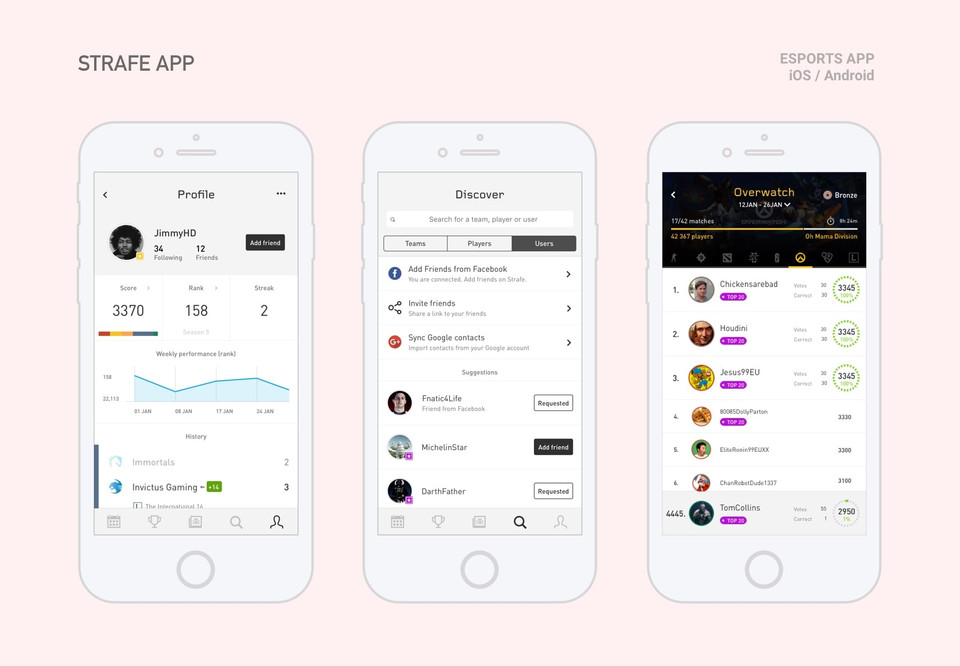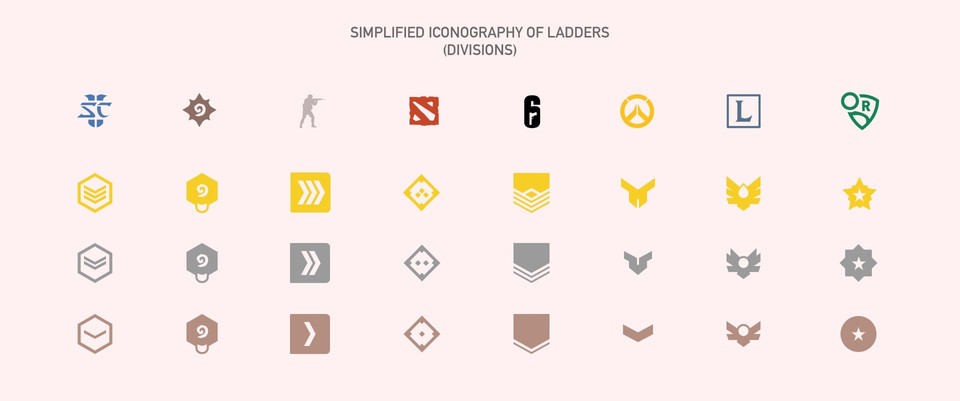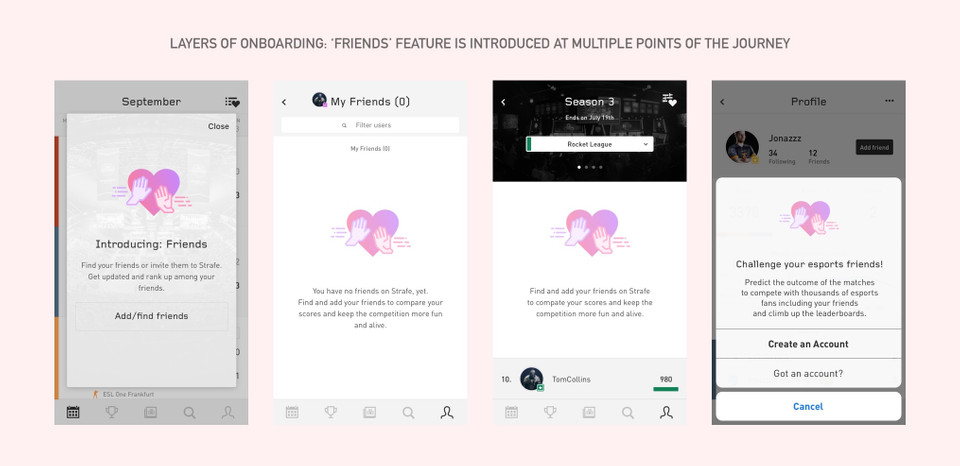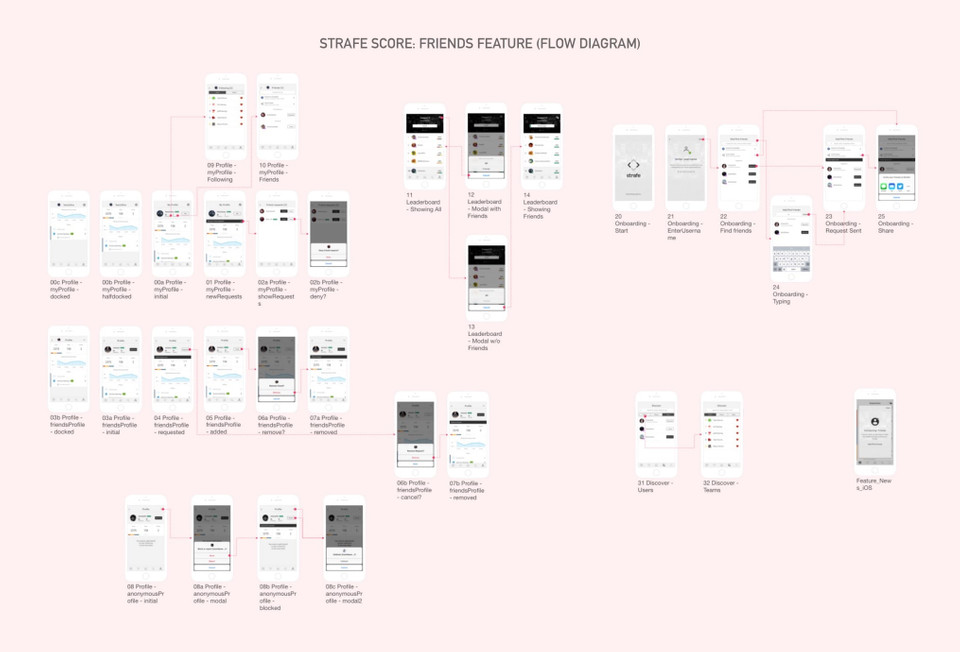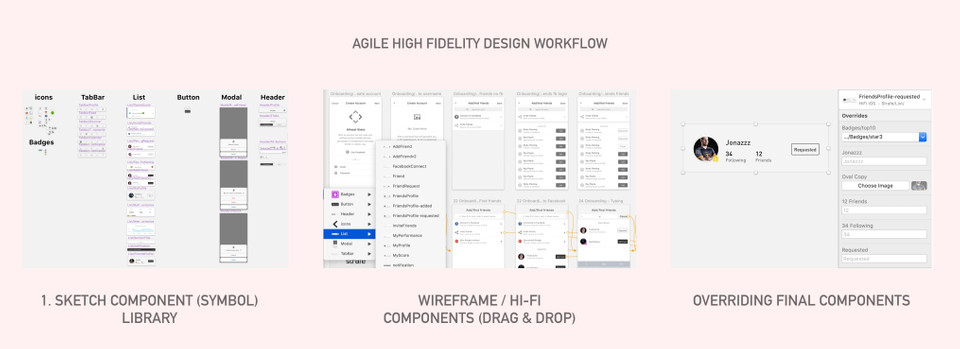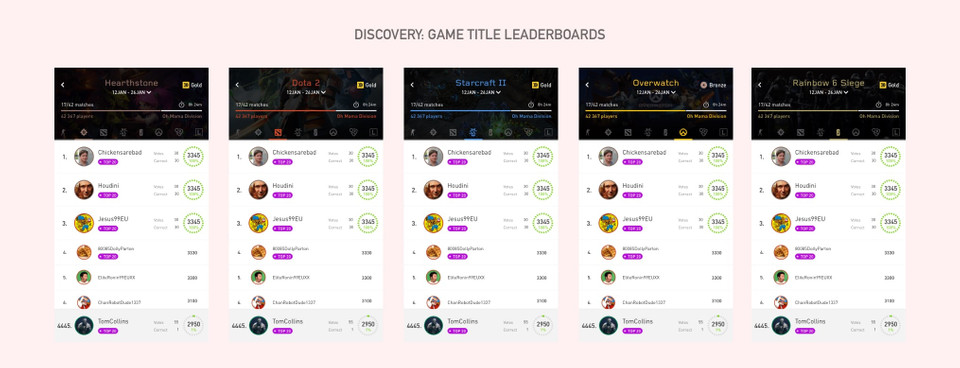Platform:
iOS/AndroidDuration:
2018/5 – 2018/8 Role:
UX-UI Designer (Consultant)Method:
Agile + Lean UXIntroduction
Esports is growing, and so does Strafe
Esports has made a significant impact on the video game industry with live streaming, increased amount of titles and large-scaled global tournaments. Strafe started as an esports tracking App, where users can follow tournaments and keep up with the news about their favourite teams/players. Strafe is also a prediction game platform with a ladder of 50,000+ esports fans. Fans enjoy the thrill of the esports in two ways:
The Problem
Strafe Score is the feature that drives the engagement of esports fans to Strafe App. Current version is widely embraced by 50,000+ active players per month. However, engagement of players during monthly tournaments (Strafe Score Seasons) drops, as the gap between the players in live-leader board grows. Strafe Score is a system where correct predictions of every video-game title rewards players to be at the top of the leader board. Strafe Score's current dynamics has encouraged players to be interested in a wider-range of video-game titles. However, having a large number of active players of various game-titles have some challenges:
The Solution: New Strafe Score
I had the chance to collaborate with the Strafe Team for a short-and-fun 3-month period with the complete design thinking process to increase esports fan engagement of Strafe Score. During my time with Strafe, I have created an efficient visual design workflow including Sketch Library, Wireframe generation and Zeplin for collaboration with developers. We have introduced new features and set-up a user research framework for addition and discovery of new-features. New Strafe Score features aimed to engage esports fans with:
The Process
Research: Contextual Analysis, Surveys (Global esports fans), Video Interviews (Q&A, presentation, feedback), Focus groups (e.g. Top-ladder), Data Analytics
Ideas: User Journey Map, Personas
Design: Design for Localisation, in-App Onboarding, Heuristic Evaluation, Sketching, Design System, Wireframing & Zeplin
Prototype: High Fidelity Prototype, Working Prototype (Staging)
Test-Evaluate: User Testing (individuals), Field (Feature) Testing, Functional Testing, Testing & Bug Reporting
Research of Prediction
Popularity of Strafe as a gamified esports platform has been growing within a global audience. The research process started with the contextual goal-analysis of Strafe fans. Initially, a focus-group of highly-engaged users (top-players) were interviewed initially to understand repetitive pain-points related with game dynamics. A group of Strafe Score players from different continents, age-groups and occupations were selected initially. Video-interviews were carried out remotely involving 3 people (1 conductor, 1 interviewer, 1 esports fan); these interviews were later scripted in order to find common-patterns and frictions based on parameters (location, age, individual conditions). The questions were aimed to gain insights on daily gameplay patterns, personal friction points, interest in esports, real-life interactions of players and esports-related goals. The interviews concluded with a short-presentation of features discovery and open-ended questions which resulted in unique and meaningful feedbacks.
Ideas: Thinking about the Features
Interviews have provided insights about how playing Strafe Score fits into the daily routines of the players, their goals and what drives them to play at a competitive edge. Learning friction-points of the current version of the leader board helped ideation of game-title focused features. Further user research has shown that friend-engagement increases overall-engagement, even when the competitors are not at their peak. Some of the ideas to be explored were:
Design: Visual Iterations on Strafe Score
Even though I have been involved with User Interface design of the library components and new-feature screens, my focus had been on improving the user experience. Branding and visual design guidelines were not updated during my consultation sprints of Strafe Score. Initially, a library of wireframe components of Sketch App was built to increase interactive collaboration with other stakeholders (including PO and developers). Visual-design workflow in Agile sprints included iterations of high-density assets made for new Strafe Score features, such as Friends functionality. The assets included onboarding, multiple-states of screens (empty, logged-out, etc.), which finally formed high-density wireframes built by 'Overflow' App. Zeplin boards were grouped and named based on features/sprints to create a reference point when working remotely with developers.
Test - Evaluate
Interactive high-fidelity flow diagrams (built by Sketch App itself) form the initial and the basic prototyping of different user-states. However, discovery of new features and micro-interactions required more specificity and higher-fidelity for testing and presentation purposes. Discovery prototypes were built using Principle App to compare possible mechanisms of pre-bracket predictions. Strafe App has 2 native mobile applications (iOS & Android) and I had been available to support the development team during development-phase with questions or when modifications were required. Internal testing includes testing of both applications on staging environment and all platforms have the same feature-set and visual style aligned with relevant design guidelines. Evaluation and testing of the product features is a continuous process, which involves a focus-group for user-testing. Here are some of the images & prototypes built during the discovery phase of new features:
Conclusions
Strafe is an exciting project that keeps up with the growth of esports built on a solid foundation. I had the chance to work as the only product-designer as a member of a collaborative team. Setting up user-research methodology, synthesis of new ideas and improving visual design-workflow have been efficient and fun processes. During user-research we have learned a lot about the transition of an esports player to an esports fan, who needs to time-manage smartly. Strafe fits in very well to the transition from the enthusiasm of youth to responsible-fun of adulthood. Both of the core-functionalities (tournament tracking and prediction game) are balanced and future-challenges will be about having a larger user-base, localisation for the global audience and improving the dynamics of competitive edge. I think Strafe is looking towards an interesting set of challenges during growth:
